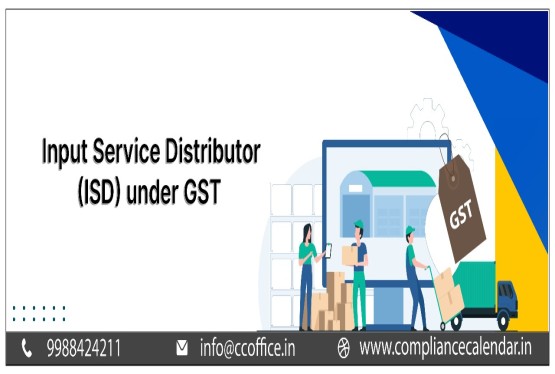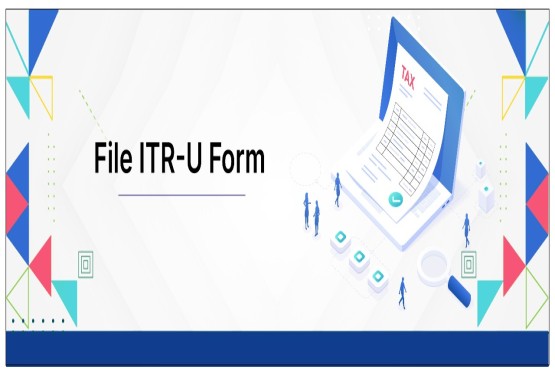Under the Income Tax Act, 1961, certain compliance requirements have been prescribed when buying or selling immovable property in India. These are governed by Section 194-IA of the Act, which mandates the deduction of TDS (Tax Deducted at Source) on property transactions exceeding a certain threshold. Form 26QB is a key document in this process. This article explains all the important aspects of Form 26QB, including its meaning, purpose, deduction process, payment, penalties, and responsibilities of buyers and sellers, using clear and simple English.
What is Form 26QB?
Form 26QB is a challan-cum-statement used for paying TDS on the purchase of immovable property. It is required to be filed by the buyer (also called the deductor) when the transaction value of the property exceeds Rs.50 lakhs. The buyer must deduct TDS at the rate of 1% from the total sale consideration and deposit this amount with the government using Form 26QB.
This TDS is applicable on the sale of residential property, commercial property, and even plots of land, excluding agricultural land. The payment of TDS and filing of Form 26QB must be done within 30 days from the end of the month in which the deduction was made. The seller (also called the deductee) is entitled to receive Form 16B – a TDS certificate issued by the buyer, confirming the deposit of TDS with the Income Tax Department.
When and How Much TDS Shall Be Deducted on the Sale of Property?
TDS must be deducted by the buyer at the rate of 1% when purchasing property for Rs.50 lakhs or more. It is important to note that the deduction is not made only on the excess amount above Rs.50 lakhs. Rather, the entire sale consideration is subject to 1% TDS once the value crosses the Rs.50 lakh limit.
Furthermore, under the amended provisions, if the stamp duty value of the property is higher than the actual sale value, then the TDS must be calculated on the higher of the two. For instance, if a property is sold for Rs.60 lakhs, but the stamp duty value is Rs.65 lakhs, the TDS should be computed on Rs.65 lakhs, resulting in a deduction of Rs.65,000. The buyer, in this case, would only pay Rs.59.35 lakhs to the seller.
This provision ensures that undervaluation of property transactions is discouraged, and the TDS is based on a fair market value.
Requirements Associated with Form 26QB Under Section 194-IA of the Income Tax Act, 1961
There are specific requirements that need to be fulfilled while filing Form 26QB and deducting TDS on the purchase of immovable property:
TDS Deduction by the Buyer
Buyers must deduct TDS at the time of making payment to the seller, whether the payment is in full or in installments. TDS has to be deposited with the government through Form 26QB within 30 days from the end of the month of deduction.
No TAN Required
A Tax Deduction Account Number (TAN) is generally required for deducting TDS. However, under Section 194-IA, buyers do not need to obtain a TAN. The buyer can file Form 26QB using their PAN (Permanent Account Number) and the PAN of the seller. This simplifies the compliance process for individuals who do not regularly deduct TDS.
Multiple Buyers and Sellers
In transactions involving multiple buyers or multiple sellers, Form 26QB must be filed separately for each combination of buyer and seller. For example, if two buyers purchase a property from two sellers, then four Form 26QB submissions would be required.
Installment Payments
If the payment for the property is made in installments, TDS should be deducted proportionately at the time of each installment. This ensures that the tax liability is met on time, even when the transaction is spread across months.
Form 16B – TDS Certificate
Once TDS is deducted and paid using Form 26QB, the buyer must generate Form 16B from the TRACES portal and issue it to the seller within 15 days of making the payment. This certificate serves as proof that the TDS has been deducted and deposited on behalf of the seller.
Agricultural Land Exemption
TDS is not required on the purchase of agricultural land. However, this exemption is only valid if the land qualifies as agricultural based on its location. If the land falls within certain urban limits as specified by population density and distance from a municipality or cantonment board, it may not be considered agricultural and TDS may still apply.
Procedure to Pay TDS Through Form 26QB
To file Form 26QB and make the TDS payment, the buyer can follow the steps below:
Step 1: Visit the official Income Tax portal and log in using your credentials.
Step 2: Navigate to the 'e-File' menu, select 'e-Pay Tax', and click on 'New Payment'. From the list, choose '26QB (TDS on Sale of Property)'.
Step 3: A new form will open. Fill in all the required details, such as:
-
Buyer and seller’s name, PAN, and contact details
-
Property address and type of property
-
Sale consideration and payment mode
-
Date of agreement and TDS amount
Step 4: After completing the form, proceed to payment. You can pay the TDS amount through net banking, debit card, or other authorized payment modes. Once the payment is successful, a challan will be generated.
Step 5: After submission, the buyer can log in to the TRACES website and download Form 16B (TDS Registration certificate) to issue it to the seller.
This process is entirely online and user-friendly, ensuring timely compliance with the TDS provisions.
How to Download Form 26QB?
To download Form 26QB for record-keeping or verification, follow these steps:
Step 1: Go to the Income Tax e-filing portal and log in.
Step 2: From the dashboard, select the 'e-File' menu and click on 'e-Pay Taxes'. Then go to the 'Payment History' tab.
Step 3: Under the list of transactions, locate the entry for ‘TDS on Sale of Property (800)’. Click on the 'Action' button to download the receipt or statement of Form 26QB.
This can be used as proof of payment and may be required during future assessments or when applying for registration of the property.
Where Can the TDS Deducted Be Seen by the Seller?
Once the buyer deposits the TDS and files Form 26QB, the amount will be reflected in the seller’s Form 26AS. This is an annual consolidated tax credit statement available on the Income Tax portal.
The TDS deducted will be displayed under Part F of Form 26AS. It will show the buyer’s name, PAN, transaction date, TDS amount, and the property details. The seller should verify that the details are accurate to avoid issues during ITR filing.
Penalty Charges Associated With Form 26QB
Failure to comply with TDS provisions can lead to penalties and interest, as listed below:
|
Reason for Penalty |
Charges |
|
Delay in Filing Form 26QB |
Rs.200 per day (Section 234E) |
|
Non-remittance of TDS |
1.5% interest per month until TDS is paid |
|
Non-deduction of TDS |
1% interest per month until TDS is deducted |
|
Non-submission of Statement |
Penalty between Rs.10,000 to Rs.1,00,000 (Section 271H) |
However, if the buyer pays the TDS along with interest and files Form 26QB within the prescribed grace period, the penalty may not be levied under Section 271H. Buyers are advised to make the TDS deduction and filing a priority in the transaction process.
Things to Remember by the Seller of the Property
For the seller, ensuring proper TDS compliance is crucial for tax reporting and refund purposes. Below are important points for sellers:
-
Provide PAN: The seller must provide their correct PAN to the buyer to avoid mismatch or incorrect credit of TDS.
-
Check Form 26AS: After the buyer deposits the TDS, the seller should confirm that the amount appears in Form 26AS. This serves as evidence for tax paid and helps in smooth filing of Income Tax Returns.
The seller should not proceed with the transaction unless the TDS formalities are completed properly, especially in high-value property transactions.
Things to Remember by the Purchaser of the Property
The buyer holds the responsibility of deducting and depositing TDS. The following points should be followed carefully:
-
Deduct TDS at 1%: It is mandatory to deduct TDS if the property value exceeds Rs.50 lakhs.
-
Collect PAN of Seller: Before initiating payment, collect and verify the seller’s PAN. Do not proceed if the PAN is invalid.
-
Enter Correct PAN Details: Mistakes in PAN while filing Form 26QB can lead to delays and complications. If there’s an error, the Income Tax Department must be contacted for correction.
-
File Form 26QB Within Due Date: Filing beyond 30 days from the month-end of the deduction will lead to penalties.
-
Generate and Issue Form 16B: Download Form 16B from TRACES and give it to the seller within 15 days of payment.
Buyers should treat the TDS filing as an integral part of the property registration process and complete it at the earliest.
Final Thoughts
Form 26QB and the corresponding TDS deduction on purchase of immovable property is an important compliance step under Indian tax laws. Both buyers and sellers have specific responsibilities, and timely action can avoid penalties and legal complications. Understanding the process in detail makes it easier for property buyers to complete the transaction legally and ensures sellers get their rightful tax credit.
Whether you are purchasing residential flats, commercial spaces, or land (other than agricultural land), following the Form 26QB procedure helps you comply with Section 194-IA of the Income Tax Act and keeps you safe from future notices or penalties.
If you are uncertain about how to file Form 26QB, calculate the TDS amount, or generate Form 16B, it is always advisable to consult with Compliance Calendar LLP experts through email info@ccoffice.in or Call/Whatsapp at +91 9988424211.
FAQs
Q1. When is Form 26QB required to be filed, and what is the applicable TDS rate on the purchase of immovable property?
Ans. Form 26QB is required when the transaction value of an immovable property exceeds Rs.50 lakh. The applicable TDS rate is 1% of the sale consideration or the stamp duty value, whichever is higher.
Q2. Is a Tax Deduction Account Number (TAN) necessary for the buyer to deduct TDS under Section 194-IA when purchasing immovable property?
Ans. No, the buyer is not required to obtain a TAN for deducting TDS under Section 194-IA. However, providing the PAN of both the buyer and seller is mandatory.
Q3. What are the consequences of failing to file Form 26QB within the stipulated time, and what are the important timelines to remember?
Ans. Failure to file Form 26QB within 30 days from the end of the month in which TDS was deducted results in a late filing fee of Rs.200 per day, subject to the TDS amount. Additionally, interest is charged at 1% per month for late deduction and 1.5% per month for late deposit. The buyer must also furnish Form 16B to the seller within 15 days from the due date of filing form 26QB.
Q4. How does the buyer make the TDS payment and obtain proof of payment after filing Form 26QB?
Ans. The buyer can make the TDS payment through the Income Tax e-filing portal using various modes, including net banking, debit card, bank counter, RTGS/NEFT, or payment gateway. Upon successful payment, a challan counterfoil containing the Challan Identification Number (CIN) is generated, serving as proof of payment.
Q5. What happens if the seller of the immovable property does not provide their PAN, and what charges are included in the sale consideration for TDS calculation?
Ans. If the seller does not provide their PAN, TDS must be deducted at a rate of 20%. The sale consideration for TDS calculation includes not only the base price but also additional charges like club membership fees, car parking fees, electricity and water facility fees, and any other similar charges.









_crop10_thumb.jpg)


















































































_for_FY_2025-26_crop10_thumb.jpg)












_learn_crop10_thumb.jpg)








_Filing_Due_Dates_for_FY_2024-25_learn_crop10_thumb.jpeg)













